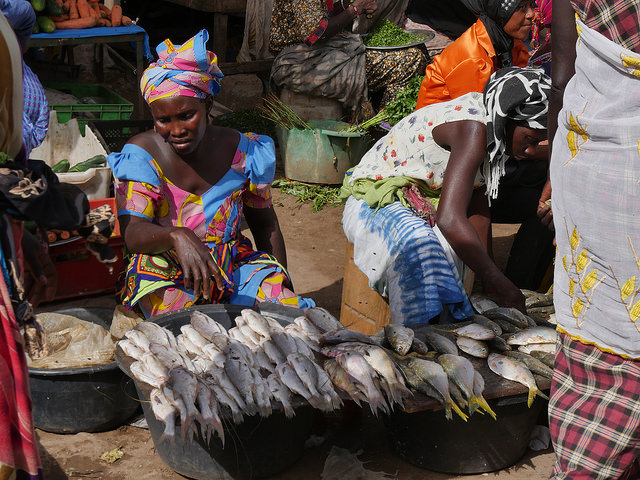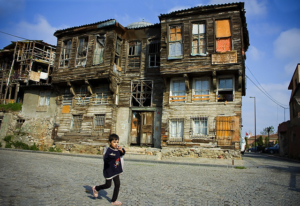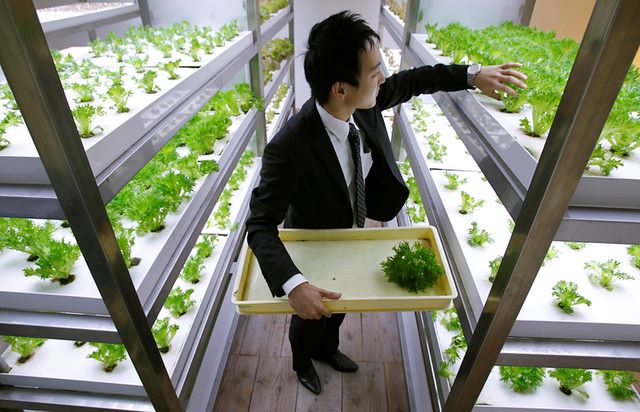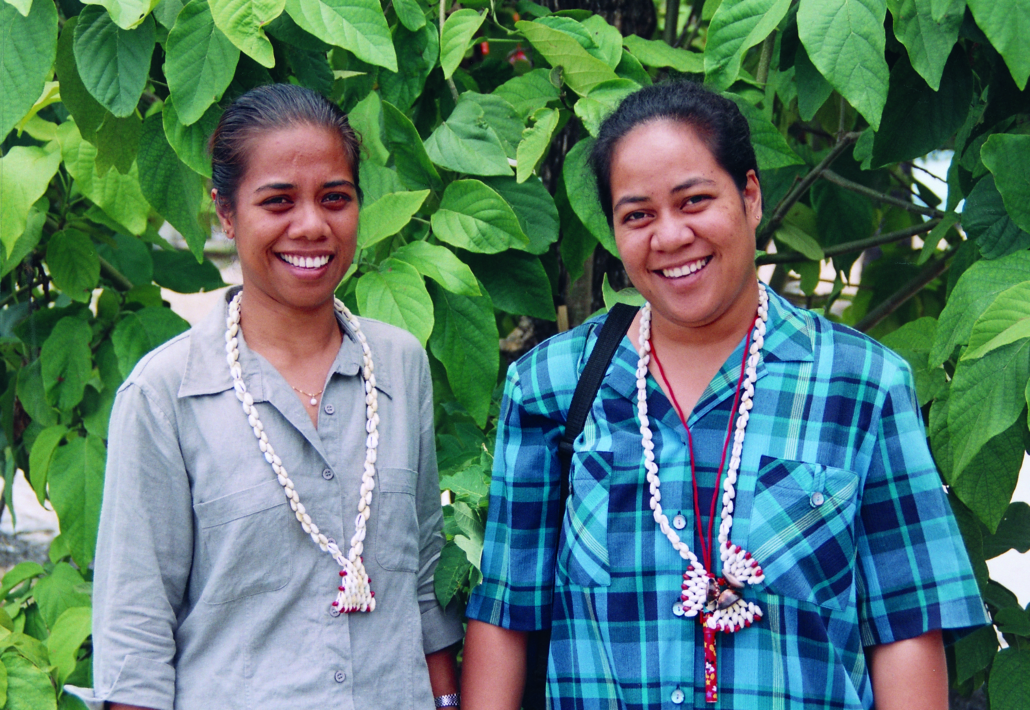 The Republic of The Gambia, situated on the North Atlantic Coast of West Africa, is the smallest country on the African continent, with a population of approximately 2.8 million people. It is categorized as a low-income, food-deficit nation, with an estimated poverty rate of around 53% and 27% of its population experiencing food insecurity.
The Republic of The Gambia, situated on the North Atlantic Coast of West Africa, is the smallest country on the African continent, with a population of approximately 2.8 million people. It is categorized as a low-income, food-deficit nation, with an estimated poverty rate of around 53% and 27% of its population experiencing food insecurity.
Causes of Hunger
- Climate-related causes— Climate-related events have impacted The Gambia over the past four decades. This has included prolonged periods of drought, followed by heavy rainfall leading to flooding and erosion. Consequently, there has been a significant decrease in crop production, with local crops meeting less than half of the food demand. This has resulted in unemployment among farmers and increased food insecurity in the country.
- Inflation—The population of The Gambia relies extensively on imported products to meet its requirements. The compounding impacts of COVID-19 and the Russia-Ukraine conflict have led to a 12.7% increase in food prices, exacerbating the country’s already precarious food security situation.
- Unemployment—The global economic crisis has significantly increased the unemployment rate in The Gambia over the past five years, rising from about 4% in 2018 to 7% in 2023. This surge in unemployment has driven people into poverty, reducing their purchasing power and worsening the problem of hunger.
World Food Programme
The World Food Programme (WFP) has launched two programs in partnership with the Government of The Gambia to address the causes of hunger and food insecurity in the country and offer sustainable solutions.
- Gambia Agriculture and Food Security Project – In partnership with the Ministry of Agriculture, this program focuses on local farmers. Its goal is to connect farmers with schools to promote “homegrown school feeding.” This initiative aims to increase crop production and the income of farmers and others involved in agriculture. It also aims to improve the nutritional status of children and reduce the current rate of stunting in children under 5, which is currently at 17.5%.
- Rural Integrated Climate Adaptation and Resilience Project Gambia – The initiative is currently being implemented in the Upper River and Central River regions, two of the worst-hit areas, to assist approximately 168,000 vulnerable individuals. The project’s primary objectives include raising awareness of climate-related challenges by providing knowledge to local farmers, implementing proactive measures against potential climate disasters and enhancing the community’s resilience to withstand and recover from such events. The WFP and its partners aim to provide financial services to promote self-reliance in the community and increase investments in climate-resistant agriculture.
Final Thoughts
In conclusion, it is crucial to address the root causes of hunger in The Gambia for the well-being of its population. The country can significantly reduce food insecurity by addressing climate-related challenges, mitigating the impact of inflation, and tackling unemployment. Initiatives led by organizations such as the WFP demonstrate the potential for positive change through targeted interventions. With continued support from the international community and collaborative efforts, there is hope for a future where hunger is less prevalent and communities in The Gambia can thrive.
– Maria Waleed
Photo: Flickr
 In July of 2023, northern India experienced torrential rainfall from monsoons. As a result of the unprecedented amount of rain, at least 100 people have died from landslides and flash floods. While South Asia typically experiences monsoon rains from June to September, climate change has made flooding in India and other weather events more extreme and erratic.
In July of 2023, northern India experienced torrential rainfall from monsoons. As a result of the unprecedented amount of rain, at least 100 people have died from landslides and flash floods. While South Asia typically experiences monsoon rains from June to September, climate change has made flooding in India and other weather events more extreme and erratic.
As a testament to the increasing severity of the monsoon rains, flooding from the Yamuna River reached the walls of the Taj Mahal. As the Yamuna reached its highest level on record at 684 feet, other sectors of Indian life were affected as well.
The Jamuna River, which runs through the capital of New Delhi, rose 681.5 feet, forcing schools to close, making residents evacuate and submerging cars and homes.
The Intergovernmental Panel on Climate Change (IPCC) classifies India as one of the nations most affected by climate change, and the flooding in India is only expected to worsen. Northern India received a month’s worth of rainfall in a single day, leading to 30,000 residents being moved to relief camps, 600 homes damaged and 300 people stranded.
How Impoverished Indians are Affected
The flooding in India affects poor populations the most. As homes are destroyed, individuals are displaced from their neighborhoods and forced to move. In fact, it is projected that 45 million Indians will be forced to migrate by the year 2050 as a result of climate-related disasters.
The destruction of homelands is not the only factor contributing to India’s climate refugee crisis. Although monsoon rains were traditionally necessary for successful crop yields, the damage of extreme climate events outweighs the benefits.
Individuals are forced deeper into poverty from flooding in India. Small farmers depending on agriculture to make a living can no longer cope with damage caused by severe weather. Since floods damage crops, roads, homes and land, workers cannot travel to their jobs or grow and transport their crops. In fact, the International Institute for Environment and Development found that 70% of households migrated after extreme weather disasters. To escape poverty, India’s most vulnerable populations abandon their livelihoods in hopes of finding jobs elsewhere.
Khalsa Aid International
Luckily, organizations such as Khalsa Aid are committed to mitigating the effects of extreme flooding in India. Khalsa Aid is an international non-governmental organization that provides humanitarian aid in disaster areas. The organization has been relying on the help of volunteers and donors since 1999 to help vulnerable populations dealing with issues like famine, water scarcity, civil war and more.
As a response to the July 2023 floods, Khalsa Aid coordinated emergency relief efforts in the Punjab region of northern India. Teams on the ground operated in Ropar, Morinda, Rajpura and other cities to provide food and shelter to people stranded in their villages by the flooding.
Looking Ahead
So far, Khalsa Aid U.S.A. has already donated $250,000 to clean-up and rebuilding efforts after the flooding in India. Although flooding and extreme weather events are expected to continue, the work of Khalsa Aid is a reminder that vulnerable populations throughout India and the world will be supported by those who care.
– Meilyn Farina
Photo: Unsplash
 Since July 2022, Europe has been going through severe heat waves. In the United Kingdom, temperatures hit over 40 degrees Celsius, leading to at least 1,500 heat-related deaths and becoming the highest recorded in the country’s history. Europe’s efforts in the heat wave crisis are tackling devastating fires and negative impacts on the health, energy and economy sectors. In addition to the war in Ukraine and subsequent global economic crisis, heat waves most affect low-income populations.
Since July 2022, Europe has been going through severe heat waves. In the United Kingdom, temperatures hit over 40 degrees Celsius, leading to at least 1,500 heat-related deaths and becoming the highest recorded in the country’s history. Europe’s efforts in the heat wave crisis are tackling devastating fires and negative impacts on the health, energy and economy sectors. In addition to the war in Ukraine and subsequent global economic crisis, heat waves most affect low-income populations.
Economic Impact of Heat Waves in Europe
Europe’s heat waves are occurring in a tense time: The world is still experiencing the coronavirus’ hit to the economy and the ongoing Russia-Ukraine conflict. Europe saw a devaluation in the euro for the first time in 20 years along with skyrocketing inflation.
In Italy, farmers state that they are seeing the worst drought in 70 years. In Germany, a major transportation river’s water level has dropped so low that slow shipping is stalling the supply chain. In France, a major utility company stated that three power reactors could not run at total capacity due to the high water temperatures of surrounding rivers.
Extreme temperatures are leading to wildfires all over the continent and are becoming expensive. In 2019, the World Wildlife Fund reported that Mediterranean countries spend more than $2 million yearly on fire management, about 80% on suppression and only 20% on prevention. The report also notes that growing wildfires negatively impact workers in forestry and land cultivation, and tourism.
Poverty and Heat Waves in Europe
The heat wave, drought and wildfires in Europe have also severely impacted the economy for daily living. Prices soared for basic commodities like wheat, rice, maize, potatoes and beets, which need much water for production. Allianz, a financial services company, reports that food and drink prices have risen by about 14% in European countries since 2021. Calling it “heatflation,” Allianz estimates Europeans will soon pay about $243 more per grocery trip.
Heat waves are exacerbating energy poverty. Skyrocketing costs in energy products and bills most affect low-income households. They often contend with poorly insulated homes, unshaded neighborhoods and a lack of air conditioning access. Consequently, heat waves negatively impact their health.
Europe’s Efforts on Heat Wave Crisis
To combat the heat wave, European countries undertook various actions. In southern France, firefighters are evacuating residents from critical areas and creating fire buffer zones by preemptively burning terrain and cutting down trees.
Portugal asked for European Union assistance, calling on the EU Civil Protection Mechanism, which delivered emergency help for its wildfires. Other nations are working on financial relief plans to help people with rising inflation. In France, the parliament approved a $20 billion relief package, and nongovernment organizations are aiding vulnerable people who lack access to heat-relief facilities.
Despite the scorching temperatures and related deaths, Europe continues these efforts on the heat wave crisis at local and international levels.
– Youssef Yazbek
Photo: Flickr
 An important part of fighting global poverty is providing people a safe place to live. 3D printed homes offers a new solution, as this new method allows for fast and cheap mass-production of affordable housing.
An important part of fighting global poverty is providing people a safe place to live. 3D printed homes offers a new solution, as this new method allows for fast and cheap mass-production of affordable housing.
What is the Current Demand for Affordable Housing?
Before the pandemic, approximately 2% of the world’s population was classified as homeless. In addition, over 20% of the world’s population lacked adequate housing. Demographic trends point to an acceleration in population growth worldwide, coupled with the decline of average household size, the global need for affordable housing is increasing rapidly.
The UN estimates—with ‘medium growth’—the world’s population will reach over 11 billion people by the end of this century. Furthermore, environmental instances have displaced millions of people around the world, make it harder to live in some places. The need for affordable housing is clear, however, new 3D printing homes could be the answer to producing quality affordable housing around the world.
What does 3D Printed Housing Offer?
Compared to traditional housing methods, 3D printing is faster and cheaper. Moreover, 3D printing offers environmental benefits. By limiting construction and waste the method is carbon neutral or even negative. With millions of people living in poorly constructed homes made with scrap metal and dirt floors, 3D printed homes promise a safer and better-quality living environment. Living in slum housing can not only make it harder to succeed in school or at work, but the dangerous living conditions can present physical health risks.
3D printed homes are made to last. 3D printing creates a hybrid concrete mortar that hardens while printing. As a result, the tool can mass-produce ‘housing kits’ with the structures needed to build a home.
Current 3D Printing Examples
In the city of Chennai, India, the country is seeing its first 3D printed homes thanks to NGO Tvasta. “Traditional construction is tedious and time-consuming. People are increasingly getting left out as affordability is limited, or settling for low-quality homes,” said Adithya Jain, the company’s CEO. They built the first house in five days. Additionally, they used 30% less of the budget than planned and produced less environmental waste in the process.
In El Salvador, an American company ICON has successfully replaced slums with 3D-printed housing. They have designed a 350-square foot home which was assembled in approximately two days. “Something that sounds like science fiction is real… This is meant to be long-term sustainable housing,” said Jason Ballard the co-founder of ICON.
3D Printing’s Promising Future
As the demand for affordable housing continues to increase, there will be a need to invest in technology that allows us to keep up with the demand, giving everyone the opportunity to live in safe and quality housing. 3D printed homes have the potential to help end global poverty and the worldwide housing crisis.
– Alex Muckenfuss
Photo: Flickr
 Urban forests take many forms, including parks, gardens, street trees and nature reserves. Around the world, urban forests reduce poverty by conserving the environment, creating economic opportunities and providing sustainable resources to people in need.
Urban forests take many forms, including parks, gardens, street trees and nature reserves. Around the world, urban forests reduce poverty by conserving the environment, creating economic opportunities and providing sustainable resources to people in need.
Environmental Conservation
As cities become more populated, urban forests help mitigate the negative effects of human activity on the environment. Trees can benefit human health by reducing water and air pollution, providing shade and improving mental health. Trees also conserve energy, absorb water runoff from storms and provide habitats for animals. Urban forests often consist of indigenous trees that can easily survive local climates and only need slight watering. As a result, urban forests are often low-maintenance, self-reinforcing tools that improve quality of life.
Impoverished communities may particularly benefit from urban forests. A 2021 analysis by the conservation nonprofit, American Forests, found that low-income areas tend to have limited green space, which makes them more likely to become urban “heat islands.” Heat islands are the result of minimal shade and widespread heat-absorbing asphalt. The “islands” can get up to 10 degrees warmer than surrounding communities, leaving the people in them at a greater risk of experiencing heat-related illnesses like heat stroke. As global temperatures rise, urban forests reduce poverty by helping people meet their basic needs, which include cool, fresh air and clean drinking water.
Economic Development and Sustainable Resources
Urban forests reduce poverty by creating jobs and helping people launch sustainable businesses. In their beginning stages, urban forests employ people for land restoration and forest planting. Urban forests also require employees for planning and management. Once urban forests fully develop, they offer a range of sustainable resources for both consumption and economic growth.
A study by researchers at Rhodes University found that impoverished groups use and benefit from non-timber forest products more than any other group. When urban forests are located in low-income areas, people can use raw materials from forests to start small businesses and make a living. Firewood from urban forests is particularly useful because people can use it to cook. Without firewood, people may lack the ability to cook, leaving them at an increased risk of food insecurity. In order to maintain a steady supply of wood, city planners must plant urban forests on adequately large plots of land.
The study by Rhodes University found that some communities in South Africa live below the poverty line, in part, because they lack sufficient land for forests. With proper planning and management, urban forests can be a pathway out of poverty for communities around the world.
Current Projects and Progress
Cities everywhere are beginning to acknowledge the value of urban forests. For example, Madrid in Spain is in the process of planting a 75-kilometer-long ring of forest around the entire city to reduce pollution and fight climate change. The United Nations is also working with Royal Botanical Gardens, Kew, to help 30 countries across Asia and Africa grow forests. Global efforts to develop more urban forests offer hope of reducing global poverty and environmental degradation. Urban forests are practical, sustainable methods for improving lives and protecting the natural world.
– Cleo Hudson
Photo: Unsplash
 Although most greenhouse gas emissions come from the global north, Africa will soon face some of the most severe impacts of the climate crisis. The country of Nigeria is in a uniquely vulnerable position. Home to around 200 million people, Nigeria is the most populous country in Africa, and 40% of Nigerians live below the national poverty line. Climate change and poverty can act in a vicious cycle. Impoverished people are often unable to adapt to increased temperatures or rising sea levels due to a lack of resources and mobility. When people lose their homes and livelihoods to climate change, they can face even greater poverty, especially when children lose access to education. This is also true for poverty and climate change in Nigeria.
Although most greenhouse gas emissions come from the global north, Africa will soon face some of the most severe impacts of the climate crisis. The country of Nigeria is in a uniquely vulnerable position. Home to around 200 million people, Nigeria is the most populous country in Africa, and 40% of Nigerians live below the national poverty line. Climate change and poverty can act in a vicious cycle. Impoverished people are often unable to adapt to increased temperatures or rising sea levels due to a lack of resources and mobility. When people lose their homes and livelihoods to climate change, they can face even greater poverty, especially when children lose access to education. This is also true for poverty and climate change in Nigeria.
Nigeria is located on the Gulf of Guinea, just north of the equator. Due to its size and geographical location, Nigeria is at risk for a great variety of climate-related challenges. Its northern regions, which border the Sahara, are experiencing increasing rates of desertification. Its low-lying coastal areas, meanwhile, are facing rising sea levels and flooding. Despite these challenges, the Nigerian government has set admirable sustainability goals. Furthermore, local farmers are using innovative techniques to adapt to climate change.
Urban Areas
Nigeria’s capital city, Lagos, is a rapidly growing economic center. It is home to between 15 and 26 million people and one-third of Nigeria’s GDP. Lagos is surrounded by massive slums which house half of the urban population. These slums, some of which are entirely composed of floating shacks and canoes, are at high risk of flooding as sea levels rise. Rising sea levels, another result of climate change in Nigeria, can cause erosion and contaminate freshwater. This damages Nigeria’s fishing industry, which feeds and employs many impoverished people. Inland areas of Lagos are also being inundated with refugees from coastal areas which have already been destroyed by flooding. As slum populations increase, living conditions become even more unhealthy and dangerous.
Agriculture
Many climate refugees in urban Nigeria come from inland, where conditions have made farming impossible for many poor families. Approximately 70% of Nigerians, many of whom live below the poverty line, rely on agriculture as their primary source of income. In 2018, thousands of people left the agricultural regions of northern Nigeria. They were displaced by droughts, food insecurity and “climate-related conflict.” According to a report from World Bank, the results of climate change in Nigeria such as rising temperatures and “erratic rainfall” could lead to a “20 to 30% reduction in crop yields.” Dust storms are also becoming more common and can significantly deplete topsoil layers. This can be crushing as these topsoil layers are crucial for successful farming. In addition to direct loss of income, poor agricultural yields will lead to food shortages. This harms Nigeria’s most vulnerable populations in both urban and rural areas.
What People Can Do
Although the climate crisis is already significantly impacting impoverished Nigerians, there are still possibilities for climate change mitigation and adaptation. A World Bank report called “Toward Climate-Resilient Development in Nigeria” outlines cost-effective strategies focused on increasing renewable energy generation and reducing agricultural and industrial pollution. One possible adaptation to climate change in Nigeria is a practice called “agroforestry.” This is where farmers plant trees around their crops and animal pastures, protecting them from increased temperatures and reducing topsoil depletion. This farm layout mimics a more natural landscape and can provide farmers with additional resources such as firewood. Additionally, it helps sequester carbon dioxide from the atmosphere. Agroforestry is gaining traction as an adaptation to climate change in Nigeria, and it could prove very useful in the future.
– Anneke Taylor
Photo: Wikimedia
 Agri-tech, a growing term used to describe Japan’s digital farming technology has greatly advanced farming systems in the country in order to combat a potential water shortage by 2030. Both experienced and inexperienced farmers in Japan are using new technologies to limit the overuse of water and fertilizer, which in turn, is fighting food insecurity and poverty for the entire population. Professor Kiyoshi Ozawa, from Meiji University Kurokawa Field Science Center, summarizes the system, “instead of spraying a large amount of water with sprinklers or the like, fertigation uses narrow pipes to place drops of water and fertilizer at the roots of the growing crops.” Farming innovations in Japan aim to reduce overall poverty in the country.
Agri-tech, a growing term used to describe Japan’s digital farming technology has greatly advanced farming systems in the country in order to combat a potential water shortage by 2030. Both experienced and inexperienced farmers in Japan are using new technologies to limit the overuse of water and fertilizer, which in turn, is fighting food insecurity and poverty for the entire population. Professor Kiyoshi Ozawa, from Meiji University Kurokawa Field Science Center, summarizes the system, “instead of spraying a large amount of water with sprinklers or the like, fertigation uses narrow pipes to place drops of water and fertilizer at the roots of the growing crops.” Farming innovations in Japan aim to reduce overall poverty in the country.
Farming Innovations in Japan
There are several innovations to take note of that have eased the labor intensity and climate impact of farming in Japan, such as heat-resistant varieties, delayed transplanting and specialized application of fertilizers, to combat both climate change and poverty in the face of a potentially grave water and food shortages.
Japan Today, an esteemed magazine based in Japan, also highlights the main goal of this growing agri-tech business as a collaboration between experts, advanced farmers and younger generations to create permanent, sustainable solutions and share knowledge about the most efficient farming techniques. “The valuable experience and techniques of veteran farmers could also be more accessible to newer farmers via the web,” explains writer Allen Croft, “such as learning resources about harvesting times with databases and photos.”
Factors Affecting Farming in Japan
Not only do these farming innovations in Japan help to alleviate poverty in vulnerable communities but they also fight climate change issues by directly limiting water and fertilizer usage and combatting overproduction. Climate change has caused tension in the agricultural world of Japan, as unpredictable water levels cause heightened food prices, specifically in terms of rice production. Several other factors are contributing to pressure on Japan’s farming industry, including a decline in labor force participation as fewer young people are becoming farmers as well as Japan’s reliance on food imports.
These new technological farming innovations in Japan are working to alleviate the problems outlined above and are bringing new uses to AI and loT technology in a way the farming communities have never seen before. Through data analysis and observation of traditional farming structures, farmers can maintain exact water measurements and maximize soil fertility in order to maintain consistent crop growth. The main goal of these digital solutions to farming in Japan is to create permanently sustainable agricultural practices for generations to come.
The Japan Social Development Fund
Specifically from the standpoint of poverty alleviation, the World Bank has implemented a project, the Japan Social Development Fund, that aids impoverished communities while focusing on education, adaptation to climate change, health and sanitation services as well as environmentally sustainable agricultural practices. While most vulnerable communities in Japan do not have access to the digital technology innovations that farmers have developed, a social shift towards awareness of water usage has allowed farmers with limited resources to implement certain practices.
The Future of Digital Agriculture
There are a variety of growing measures set in place to make the agriculture business in Japan more sustainable in the face of both climate change and poverty. Digital agriculture is growing at an immense rate and it is predicted that the global market, specifically for agricultural robots, will reach $73.9 billion by 2024, which will vastly change the structure of food production and the labor force. The scope of digital farming innovations in Japan is broad and could potentially create a basis for agriculture in other countries struggling with water and food shortages as well.
– Caroline Pierce
Photo: Flickr
 Green growth refers to economic growth through the use of sustainable and eco-focused alternatives. These “green” alternatives benefit both the economy and the environment all while contributing to poverty reduction. Ecovillages are a prime example of an environmentally conscious effort to address global poverty. They are communities, rural or urban, built on sustainability. Members of these locally owned ecovillages are granted autonomy as they navigate a solution that addresses the four dimensions of sustainability: economy, ecology, social and culture.
Green growth refers to economic growth through the use of sustainable and eco-focused alternatives. These “green” alternatives benefit both the economy and the environment all while contributing to poverty reduction. Ecovillages are a prime example of an environmentally conscious effort to address global poverty. They are communities, rural or urban, built on sustainability. Members of these locally owned ecovillages are granted autonomy as they navigate a solution that addresses the four dimensions of sustainability: economy, ecology, social and culture.
The Global Ecovillage Network
The Global Ecovillage Network (GEN) recognizes that all four facets of sustainability must be addressed for maximum poverty reduction. Solely focusing on the economic or environmental impact will not yield optimal results. Embracing, not eliminating, the social and cultural aspects of sustainability should the aim of all communities in order to move toward a better future.
The development of sustainable communities around the globe is a commitment of the GEN. The organization’s outreach programs intend to fuel greater global cooperation, empower the citizens of the world’s nations and develop a sustainable future for all.
Working with over 30 international partners, GEN focuses on five defined regions. GEN Africa was created in 2012 and has overseen developments in more than 20 communities across the continent.
A Focus on Zambia
Zambia is one the countries garnering attention. Over half of Zambia’s population — 58% — falls below the $1.90 per day international poverty line. The majority of the nation’s impoverished communities live in rural regions.
Zambia’s government addresses these concerns by integrating the U.N.’s sustainable development goals into its development framework. With a focus on economic and ecological growth, Zambia could lay the groundwork for the success of its’ ecovillages.
Planting the Seed
The Regional Schools and Colleges Permaculture (ReSCOPE) Programme recognizes youth as the future keepers of the planet. As well as Zambia, the program has chapters in Kenya, Malawi, Uganda and Zimbabwe. The focus is on establishing regional networks to strengthen sustainable efforts. The Zambia chapter along with its 17 newly joined organizations work toward the goal of educating and encouraging communities to find sustainable methods of food production.
ReSCOPE seeks to connect schools and their local environments through the Greening Schools for Sustainable Communities Programme. The program is a partnership between GEN and ReSCOPE and has received funding from the Scottish government. Through education and encouraging sustainable practices, Zambia’s youth have an active role in ensuring future growth.
Greening Schools
Greening Schools strengthens the communities of four schools — the centers of resilience and a source of community inspiration. Beginning with nutrition and food security, students are able to play a part in developmental change. Their hard work includes planting of hundreds of fruit trees. The schools became grounds for hands-on agricultural experience and exposure to the tending of life.
However, the impact was not restrained within the schools. The greening schools inspired local communities to make seed security and crop diversification a commitment. In 2019, these communities “brought back lost traditional crops and adopted intercropping and other agroecological practices.”
As part of their sustainable development goals, the U.N. recognizes the value of investing in ecovillages. Goals 11 and 12 stress the importance of sustainable communities and responsible consumption and production respectively. Educating and advocating for youth to take part in ecovillages addresses this matter.
Coming generations will determine the future, and the youth wield the power to address global concerns like sustainability and poverty. Ecovillages are a great new way to break the cycle of poverty.
– Kelli Hughes
Photo: Unsplash
 The Maldives, an archipelago located near India and Sri Lanka, faces significant food security and hunger challenges. With a population of 515,696 citizens, it is estimated that over 10.3% are battling hunger. However, increased efforts have been made to combat this rise in hunger in the Maldives.
The Maldives, an archipelago located near India and Sri Lanka, faces significant food security and hunger challenges. With a population of 515,696 citizens, it is estimated that over 10.3% are battling hunger. However, increased efforts have been made to combat this rise in hunger in the Maldives.
Problem in Numbers
With various scattered islands in the Maldives, it must be noted that most citizens live in urban areas. However, despite this setting, 17.3% of children in the Maldives are underweight, while 10.6% are wasted, a condition where a child’s muscle and fat tissues dissolve away to the bone.
It is estimated that only 47.8% of babies are exclusively breastfed during their first six months of life. As a result, many infants do not receive the essential nutrients needed for healthy development, which could lead to significant health problems in the future.
Alongside the impact of malnutrition on children, it is important to highlight that the adult population also experiences a significant burden, with 42.6% of women of reproductive age suffering from anemia.
Causes of Hunger and Poverty
Various factors cause food insecurity in the Maldives. One major factor is poverty, which has been exacerbated by a decline in tourism. Tourism is estimated to contribute to two-thirds of the nation’s GDP, so the recent border closures due to COVID-19 have had a severe impact on the livelihoods of the citizens. With one-third of adult males and a quarter of females engaged in tourism-related occupations, thousands have lost their jobs, making it harder for people to provide food and other necessities for their families.
Climate change, environmental degradation and declining ocean health threaten food security in the Maldives. Rapid temperature changes, flooding and drought impact agricultural yields, reducing the ability to produce food locally.
Another contributing factor to the hardships many families face is the decline in fish exports. Since fisheries after tourism represent a significant portion of the GDP, many families that rely on fishing as their primary source of income have experienced severe financial impacts.
Road to Change
Despite the rising hunger rates among the population of the Maldives, several organizations have mobilized to assist those in need. A prominent organization in this effort is the Food and Agriculture Organization of the United Nations (FAO), which is committed to advancing both fisheries and agriculture in the Maldives.
The FAO’s primary objective was to reassess the situation in the Maldives and create opportunities to grow the fishery and agriculture sectors. By establishing a stable framework, the organization enabled thousands to secure new jobs in the agriculture industry while increasing demand for specific goods.
Additionally, the FAO focused on teaching sustainable practices to hundreds of Maldivian farmers. By supporting small-scale farms, the FAO significantly boosted production in underprivileged communities. The organization also equipped farmers with the tools and knowledge to thrive amid climate change. This included providing methods to enhance the productivity of their crops, livestock and fisheries despite challenging climatic conditions.
Despite significant support from the FAO, the Maldives still struggles to adequately feed its entire population. While organizations like the FAO can provide short-term assistance, long-term solutions require active involvement from the government. To effectively reduce hunger, the Maldivian government must collaborate with nonprofit organizations to improve food security nationwide. By working together, NGOs and the Maldivian government can help decrease the overall hunger rate in the Maldives.
– Aditya Padmaraj
Photo: Flickr
Updated: November 1, 2024

Tuvalu is a country made up of nine islands in the West Pacific Ocean. Because Tuvalu is a former British colony, many of its citizens speak English, even though the native language is Tuvaluan and the native people are Polynesian. One-third of the population lives in Funafuti, the main island that is also the most urban. The rest of the population lives a more traditional lifestyle with extended families. Hunger in Tuvalu has been a problem, a direct result of people lacking sufficient money or land to provide for their needs. Here are 5 facts about food and hunger in Tuvalu.
5 Facts About Food and Hunger in Tuvalu
- History: For most of Tuvalu’s history, a majority of the population was subsistence farmers, living off of what they grew. Hunger in Tuvalu was a part of life, but there was little famine. Usually, a family could grow enough food to support themselves, and they supplemented their diets with fish caught in the ocean.
- Importing Food: As Tuvalu’s connection to the rest of the world has increased, it has begun to import more and more food. Now, 80% of food is imported, mostly from the nearby countries of Australia, Japan, New Zealand and Fiji. Importing food is changing hunger in Tuvalu.
- Farming and Fishing: Hunger has decreased due to imported food, but Tuvaluans still face challenges with food security. Before Tuvalu began importing most of its food, local farms and fishing provided food security, but now most fish caught is exported. Even so, many rely on their land or fishing to earn money, as a majority of Tuvaluans make their livings as farmers or fishermen. Climate change is also a major threat to food security because changing ecosystems can hurt people’s food supply. As coral in the ocean dies, fish — a crucial food supply — die as well. Additionally, seawater is slowly becoming acidic, making it an increasingly inhabitable environment for sea life. Both factors reduce the number of fish people can export, which is how many Tuvaluans earn their salaries.
- Population Growth: A high population growth rate also poses a challenge to food security, threatening to increase hunger in Tuvalu. The yearly population growth rate is 0.87%, and while it is only ranked No. 152 in the world, the land cannot support the current rate of population growth. This increases the possibility of hunger, as many, especially on the smaller islands, completely rely on farming or fishing for their salaries.
- Other Health Concerns: Despite circumstances threatening food security, hunger in Tuvalu is not the country’s primary food-related problem. Imported foods, highly composed of fat and sugar to reduce spoilage, have increased obesity on the islands. The country ranks fifth in obesity, with an obesity rate of 51.6%. Now, even though processed food has virtually ended the issue of hunger in Tuvalu, it has created another health concern: obesity.
By importing food, Tuvalu has solved many of its issues surrounding hunger. Even though the country still faces challenges surrounding food security and obesity, the issue of hunger in Tuvalu has become much less prevalent since the country increased connections with the rest of the world.
– Seona Maskara
Photo: Flickr
